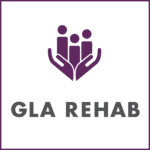Goal Setting, Occupational Therapy, and the Community Context: Where to begin and why it matters.

Goal Setting in the Community Context: Where to begin and why it matters.The Canadian Association of Occupational Therapists (CAOT) describes one of the performance expectations for “competent” OT practice as the ability to “function effectively as a client-centered expert in occupation, occupational performance and occupational engagement” (CAOT, 2007).
One of the cornerstones of OT practice is to maintain client-centeredness in our assessment and treatment plans and to act as advocates for our clients’ goals. But we cannot do this unless we know what really matters to our clients.
One of the ways that OTs can practice in a truly client-centered fashion is to facilitate a conversation with the client about goals at the very start of the therapeutic relationship. Goal setting at the outset of therapy is essential to competent and meaningful occupational therapy practice – and is particularly important in the community context.
For OTs working with clients in the community it can be a daunting task to know where to start. Goal setting in the hospital context is more straightforward and is usually centered on specific skills aimed at a timely and safe discharge.
In contrast, when working with clients once they’ve been discharged home the goals of therapy may be less apparent and it may seem like there are so many pressing issues that it’s difficult to know where to begin. Clients may need assistive devices and other safety equipment, they may have various physical and cognitive deficits, and they may have developed underlying difficulties with mood and inner drive. They may also require help to increase their participation in meaningful activities.
When clear and attainable goals are established and prioritized the therapist and client enter into a partnership where both parties have accountability in achieving the established goals. The OT has a responsibility to facilitate appropriate assessment, intervention and advocacy and the client has a responsibility to be an active participant in the therapeutic process.
By setting goals with the client, OTs can narrow their focus and provide highly targeted interventions. Client satisfaction with services is improved because they are seeing results in the areas that matter most to them.
Then, when progress reports are sent, they are clearer and demonstrate measureable progress when therapy services are targeted at specific goals.
At GLA we provide client centered care. We work closely with our clients to learn about their hopes and dreams for the future and we help them to be successful through goal-directed therapy.
Canadian Association of Occupational Therapists. (2007). Profile of Occupational Therapy Practice in Canada (2007). Ottawa, Canada.

